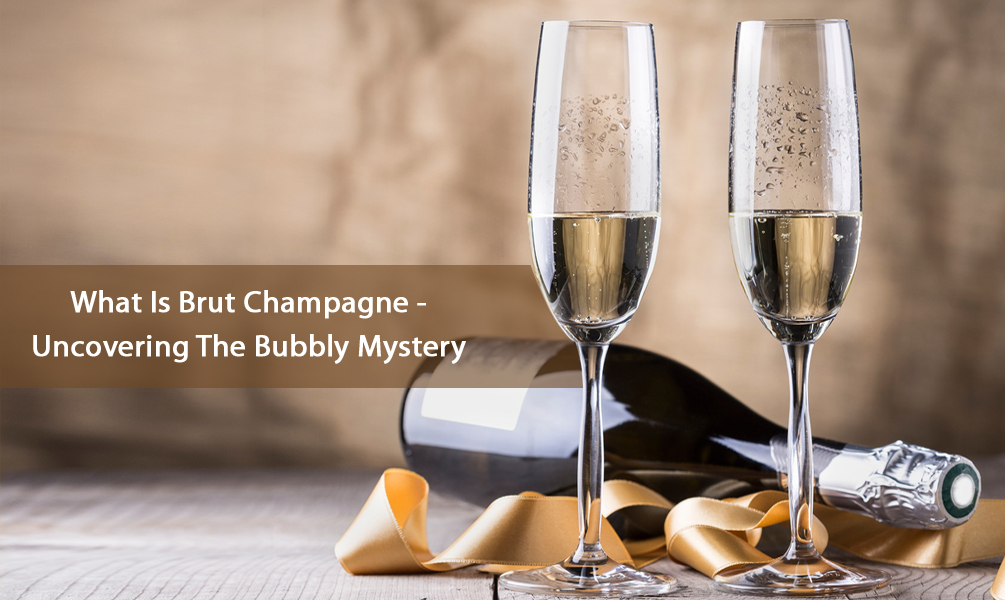
Toasting a special occasion with champagne is a celebrated tale, and in this effervescent narrative, Brut takes center stage as the protagonist. Among the wide spectrum of options, Brut champagnes have always been the most popular and sought-after style of champagne, easily recognizable with the label reading “Brut”. But what is Brut Champagne?
Regardless of whether you are a novice, a casual drinker, or a wine connoisseur, it is natural to be both drawn and intimidated by the many-sidedness of champagnes, from Brut Nature to Brut, Dry, and Doux—each defining a champagne’s personality based on sweetness.
So, to keep your bubbly fever high and help you nail an ideal bubbly that will best complement your occasion and meal with its sweet spot, we present you with this blog that covers everything about a Brut champagne, from its uniqueness, taste, pairing, serving, and more. Read on and, like a sailor navigating the stars, sheer through the dazzle and discover the secrets within.
What Is Brut Champagne?
Have you ever seen a label and wondered what is Brut in champagne? The term “Brut” originates from the French word for “Dry”, and it aptly describes Brut champagne as a dry, sparkling wine.
Like most champagnes, Brut champagne possesses a subtle sweetness, but it keeps this sweetness low, allowing the true balance, complexity, and versatility of the bubbly to shine through with each sip. Its roundedness is what makes it a high-quality choice among folks for indulgence and toasting special occasions like birthdays, housewarmings, and Christmas.
Think of it as your parents rounding off their morning coffee to suit their sugar preferences. Similarly, champagnes are crafted with varying sugar levels to cater to different palates. In the case of “Brut”, it has a dry profile with a sugar content ranging from 0 to 12 grams per liter (g/L).
What Is Brut Champagne Made Of?
Now that we know what Brut means on champagne bottles, it is time to uncover how a Brut cuvee is actually made.
Like any other champagne, Brut Champagne is crafted using the traditional method of champagne making called “method champenoise”. It can bear the name champagne as long as it is produced and bottled in the Champagne region of France using permitted grape varieties, primarily Pinot Noir, Pinot Meunier, and Chardonnay.
The key distinction in the traditional method that sets Brut champagne apart from others is a step known as “liqueur d'expedition,” where champagne producers add a desired amount of sugar before corking the bottle.
Initially, sugar was added to counteract the sour, highly acidic personality of champagnes. However, over time, it became a practice to fine-tune champagnes’ sweetness levels to suit different sweetness preferences, like a bone-dry Brut Nature champagne, a slightly sweet Brut champagne, or a sweet nectar Doux champagne.
Sweetness Levels In Champagnes: Brut, Dry, Doux, and More
As we know, the sweetness levels in champagnes vary, whether they are Brut or non-Brut varieties. It is important to remember that the amount of sugar added by champagne producers is referred to as the "dosage” or “residual sugar,” typically measured in grams per liter (g/L).
Here’s a detailed list of each style of champagne, accompanied by their respective dosages, offering a clear overview of their sweetness levels. Additionally, we have mentioned the calorie content in all champagnes to let you sip in an informed manner.
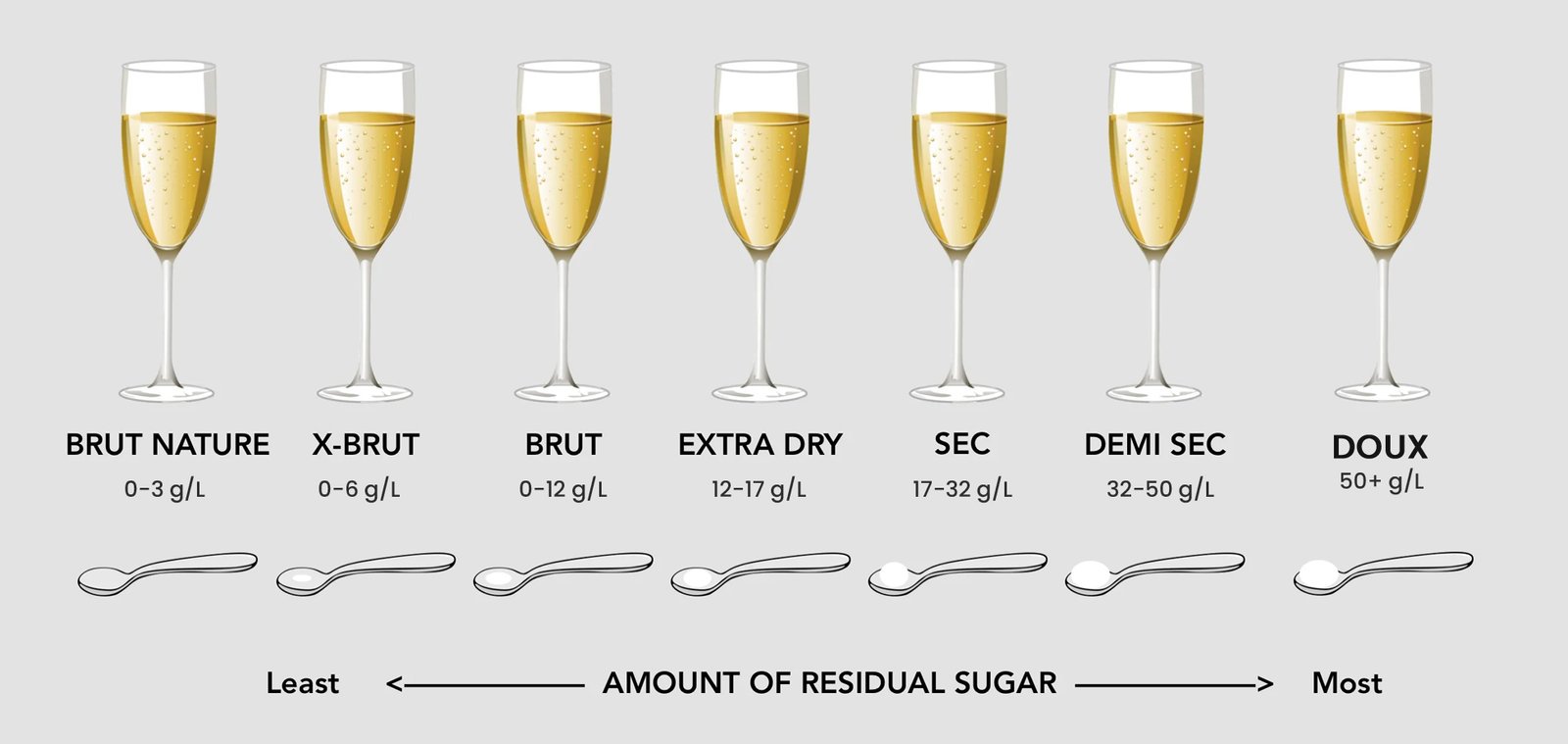
- Brut Nature (0–3 g/L):
Also known as “Brut Zero” or “Non-Dosage”, this champagne boasts the lowest residual sugar and offers a bone-dry experience. As a result, the Brut Nature style of champagne delivers a natural and crisp sensation on the palate, with no sweetness to counterbalance its acidity and flavors.
Calories: 90-100/glass
- Extra Brut (0–6 g/L):
Extra Brut champagnes are very dry, with minimal sweetness compared to bone-dry Brut Nature, allowing the true character of the bubbly to shine through with each sip.
Calories: 90-100/glass
- Brut (0–12 g/L):
With a dosage of less than 12 grams per liter, Brut champagne is characterized by its crisp, dry profile with only a hint of sweetness, making it a high-quality option for all special occasions. It achieves an impressive balance where neither acidic nor sweetness overwhelm each other.
Calories: 100-120/glass
- Extra Dry (12–17 g/L):
Despite their name, Extra Dry Champagnes are slightly sweeter than Brut. They are the best choice for those who prefer champagnes with a well-rounded balance and a dash of sweetness.
Calories: 110-130/glass
- Sec (17-32 g/L):
Sec champagnes are noticeably sweeter than Brut and Extra Dry champagnes. They are best enjoyed as aperitifs or paired with desserts that are not overly sugar-laden.
Calories: 130-150/glass
- Demi-Sec (32–50 g/L):
Much sweeter than Sec champagne, Demi-Sec champagne is a perfect companion for desserts and caters to those with a penchant for more sweetness in their bubbly.
Calories: 140-160/glass
- Doux (50+ g/L):
Last but certainly the sweetest, Doux champagnes boast the highest amount of sugar, which serves a full-bodied expression that overwhelms the palate. Similar to dessert wines, these champagnes are designed for those with a sweet tooth and are reserved for special occasions.
Calories: 150-180/glass
| Dosage Level | Sugar Content |
|---|---|
| Brut Nature | Very Dry (0 g/L) |
| Extra Brut | Extremely Dry (0-6 g/L) |
| Brut | Dry (less than 12 grams per liter) |
| Extra Dry | Slightly Sweet (12-17 g/L) |
| Sec | Medium Sweet (17-32 g/L) |
| Demi-Sec | Sweet (32-50 g/L) |
| Doux | Very Sweet (50+ g/L) |
These are the various sweetness levels in champagnes. Each dosage determines the overall character and taste of a champagne, so it’s crucial to examine the label and spot the residual sugar content to nail the perfect bubbly for your taste.
Believe me, heartbreak feels bitter when a sweet tooth lands a Brut instead of an oversweet Doux!
What Does Brut Champagne Taste Like?
In general, a good Brut champagne is expected to be dry, crisp, smooth and medium to light-bodied, with a long finish and notes of fruitiness, minerals, and biscuits.
However, this is a generalization because even though Brut champagne has a defined sweetness level, two Brut champagnes can taste drastically different due to factors such as terroir, grape composition, blending, and aging periods set by champagne producers.
For instance, a Blanc De Blancs Brut champagne, made from 100% Chardonnay grapes, will taste crisper and more delicate than a Blanc De Noir Brut champagne, which is made from black grapes like Pinot Meunier and Pinot Noir, resulting in a richer and more robust taste. Additionally, two Brut vintage champagnes with different aging periods will taste different, with one aged for a longer period being more complex and nuanced in taste.
What Is the Best Brut Champagne Food Pairing?
Pairing Brut champagne can be a very delightful experience. Its well-roundedness, crisp acidity, and effervescence make it a versatile choice that enhances a variety of foods while refreshing the palate. This medium to light-bodied sparkling wine complements an array of dishes, from delicate seafood dishes like oysters and sushi to poultry options such as roasted chicken or turkey.
Notably, the late and esteemed Gerard Basset MW recommended Brut champagne food pairing with soft, creamy cheeses like Brie and Camembert, as a highly acidic rush is all it takes to cut through a high fat content. This versatility makes Brut a high-quality champagne to toast special occasions and elevate dining experiences.
How To Serve Brut Champagne?
The key difference between Brut champagne and other champagnes is its dosage, which sets it apart from other champagnes with their own sweetness levels. These differences do not bring any change in the way of their serving, and that’s why all the rules that apply to how to serve and drink champagne also apply to Brut Champagnes, with crucial checks on temperature, glassware, and technique.
Here’s how to serve and drink Brut champagne correctly:
- Chill the Bottle: To enjoy your Brut in an enhanced way, make sure you chill it to an ideal serving temperature of 45°F. You can achieve this by submerging the bottle in a bucket of ice and water for a few minutes or refrigerating it for a few hours, avoiding over-chilling.
- Pick Ideal Glasses: Now, select the ideal glasses that will help you relish your bubbly with the perfect flow of aromas and effervescence. The most common options are champagne flutes or tulip-shaped glasses.
- Open the Bottle: When you are ready to open the champagne bottle, remove the foil and untwist the wire cage holding the cork in place. Hold the bottle at a slight angle of 45°. Slowly, with your thumb on the top of the cork, carefully twist the bottle until you hear a satisfying “pop” sound.
Note: Do not shake the bottle before opening, as it can trigger the immense pressure buildup inside, leading to the cork getting stuck or shooting out ferociously at a loved one. - Pouring: Tilt the glass at 45° and gently pour the champagne into the glasses until they are ⅔ full, allowing the golden bubbles of Brut to settle and avoiding overflow. As a rough estimate, you should be able to pour around 6 glasses from a standard bottle of champagne.
- Swirl and Sip: Give the glass a gentle swirl to allow the poured Brut champagne to open up, stirring the air with a crisp, citrus, and slightly floral bouquet of Brut champagnes.
- Sip: The correct way to drink champagne is to take gentle sips and allow its finesse to linger on the palate. In Brut, you will uncover crispness, freshness, and fruitiness, teasing the cheeks and tantalizing the senses.
- Food Pairings: For an appetizing pairing, try opting for the Brut champagne food pairings with seafood dishes like oysters, soft cheeses, or roasted chicken.
- Enjoy Responsibly: No matter how magical the allure of champagne may be, it can turn you tipsy in no time. So drink champagne in moderation to avoid issues for yourself and those around you.
Is Brut Champagne Good For Mimosas?
Yes, Brut is one of the best champagnes for mimosas, especially for those who enjoy this tangy, refreshing cocktail with a less sugary twist. The traditional method to prepare mimosas is by blending sparkling wine with citrus juice, typically orange juice. When you use a good Brut champagne to make a mimosa, its low dosage and crisp, refreshing profile allow the citrus flavors of the orange juice to shine through.
Of course, there’s always room for experimentation. If you enjoy your mimosas extra sweet, you can opt for a Demi-Sec. If you prefer more fruitiness, a rosé champagne may be your go-to choice. Alternatively, for more light-bodied and affordable sparkling wine, you can explore the Italian sparkling wine Prosecco.
Find Your Best Brut Champagne With Wine & Champagne Gifts store
Looking forward to celebrating with a good Brut champagne? Then head forward to our jaw-dropping collection of Brut champagnes, which have received universal praise for their starring balance, elegance, and freshness. Each one is celebrated as the best Brut champagne, bearing the signature style of its prestigious champagne house.
Have a look at them and buy champagne online today, with the convenience of customisation and seamless delivery services across the USA, to pamper yourself and others. Moreover, each of these bubbles are adorned as fabulous, easy to Buy Champagne gift baskets, making your celebrations stand out in culinary heaven.















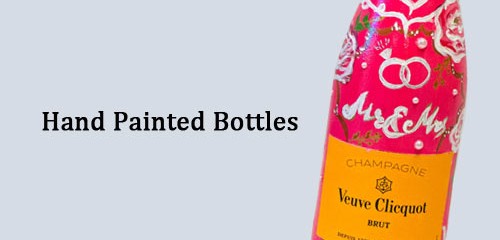
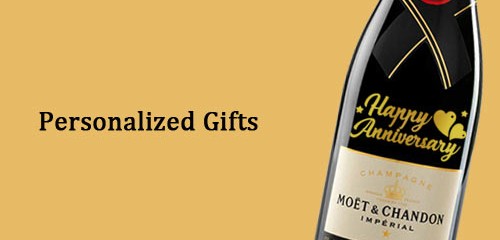
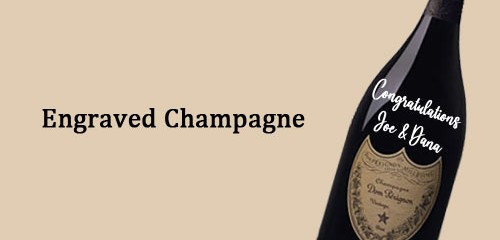




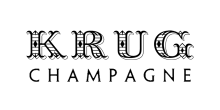



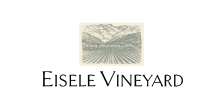

















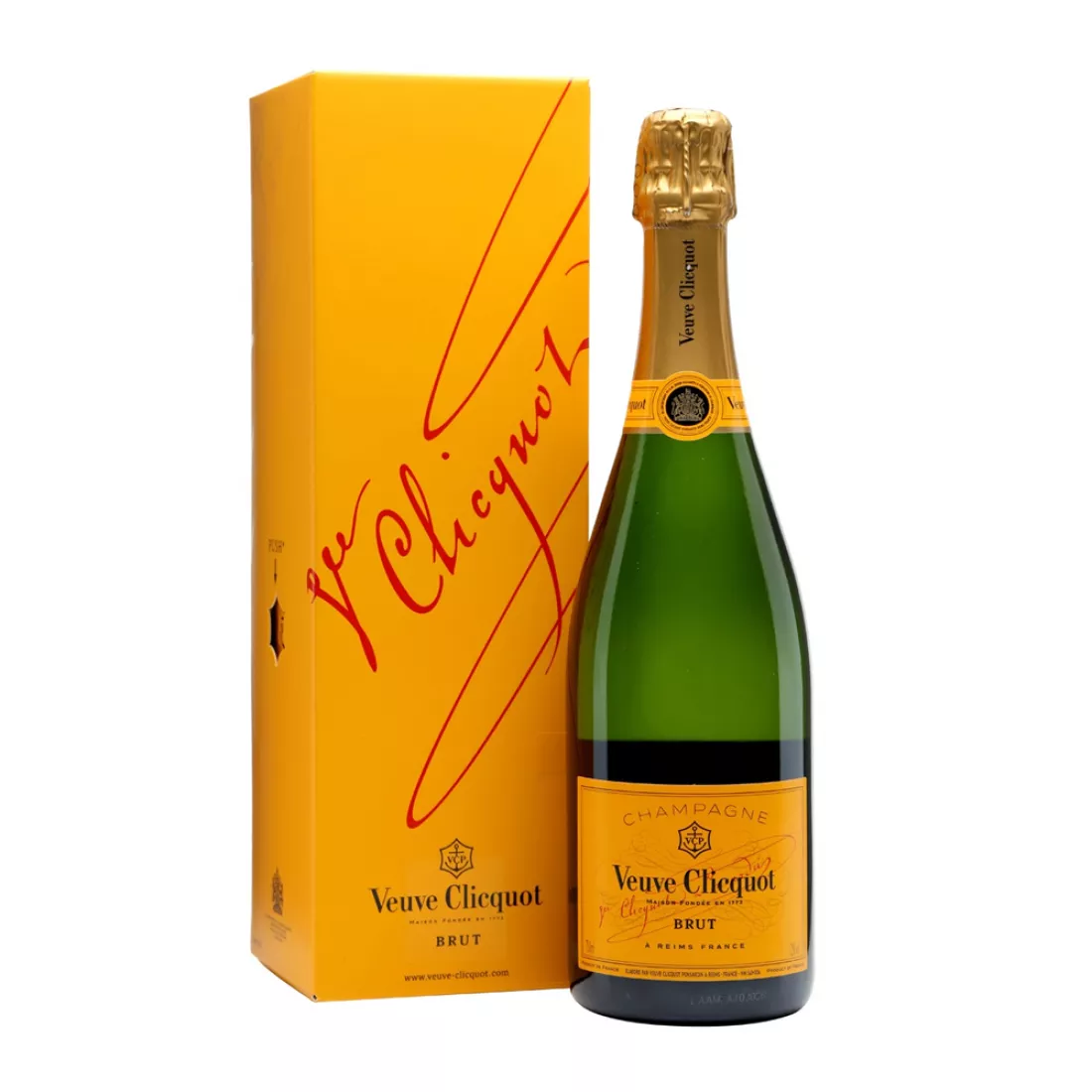
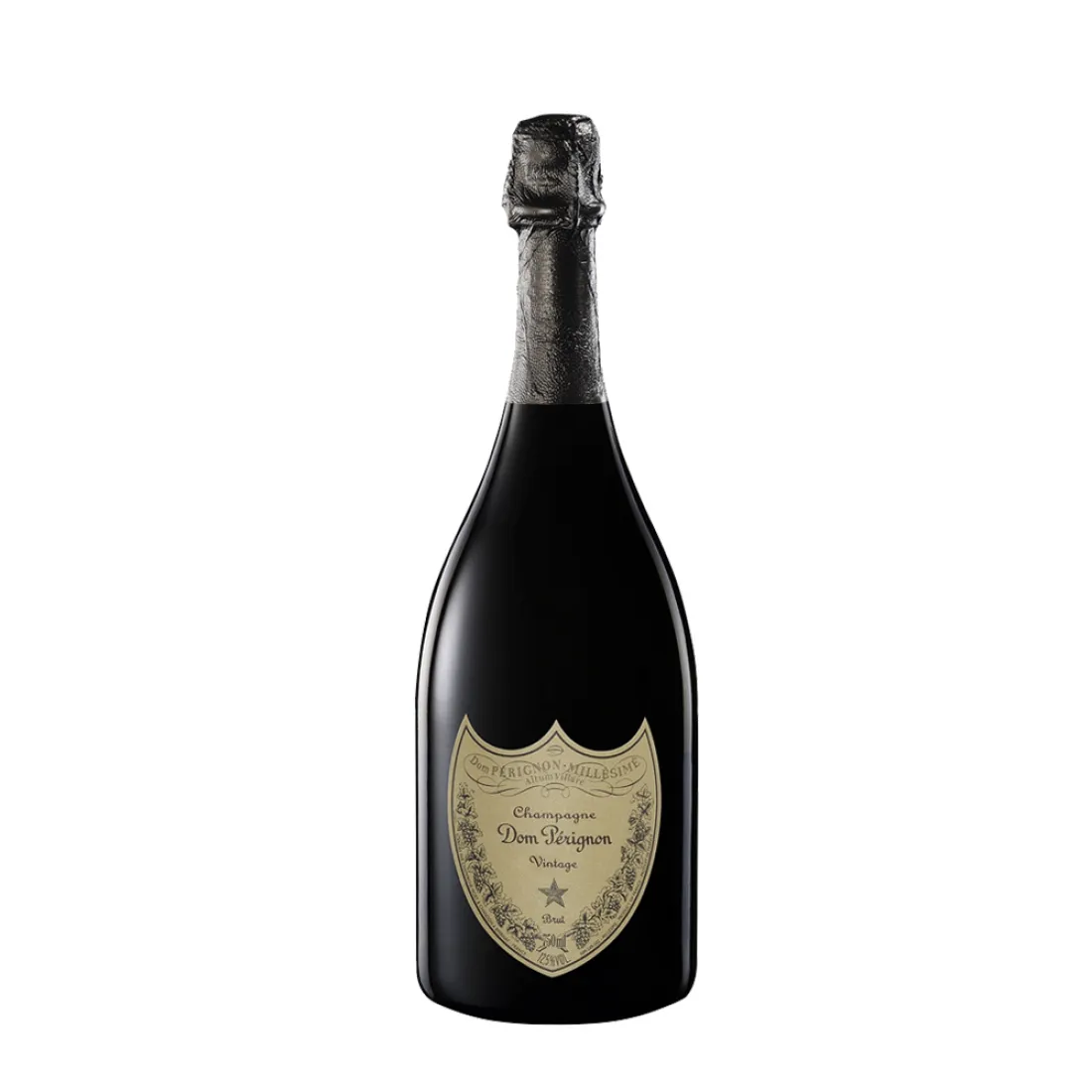
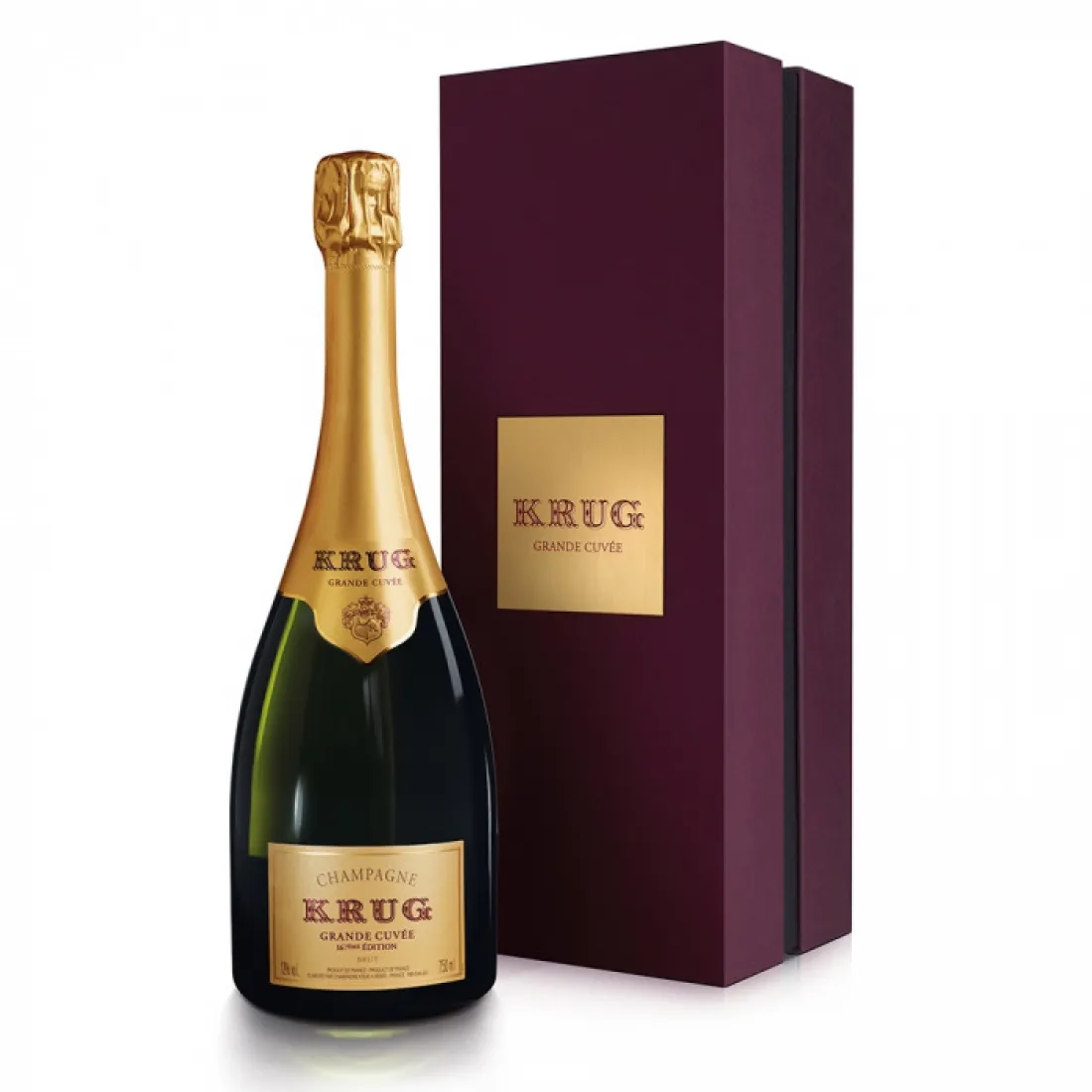

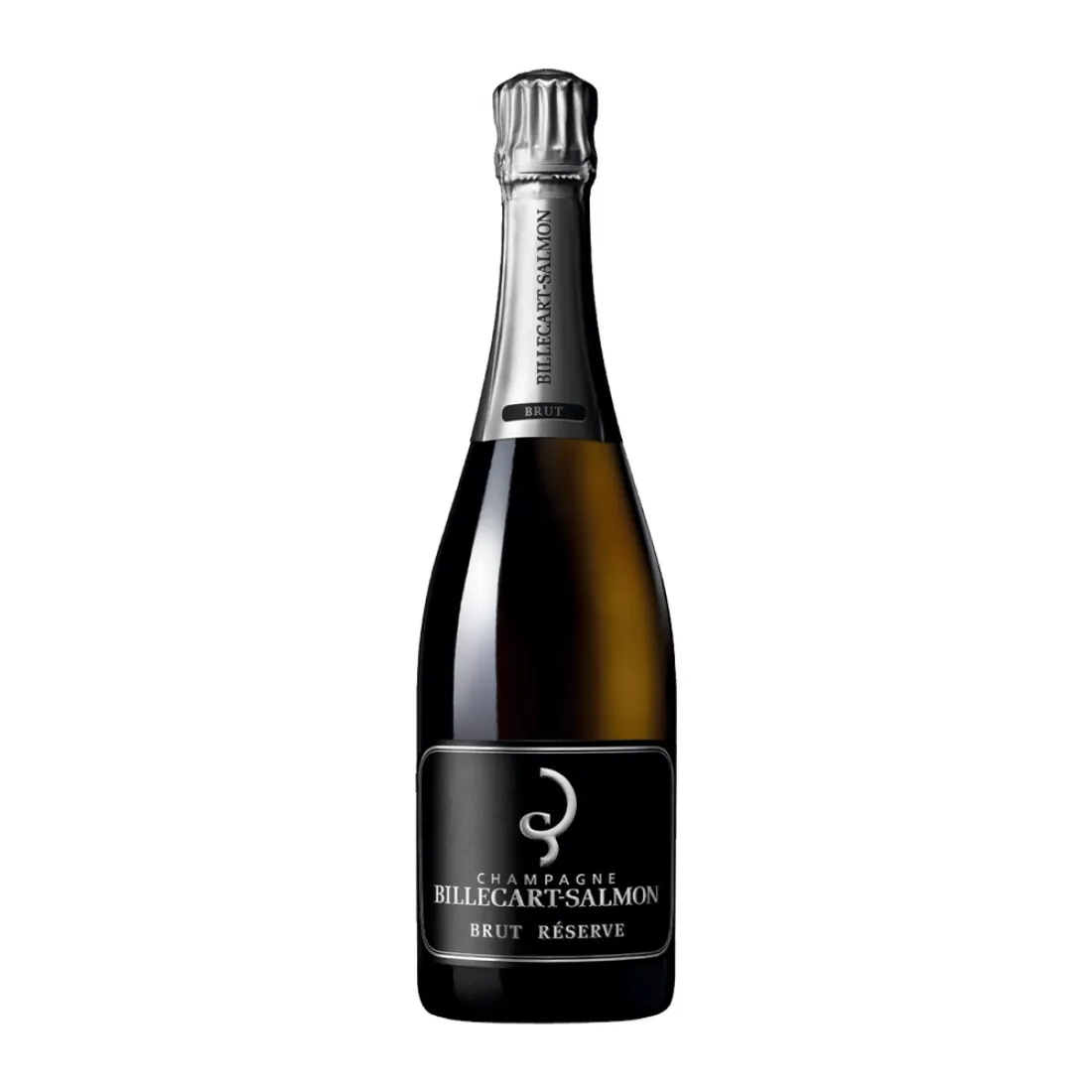
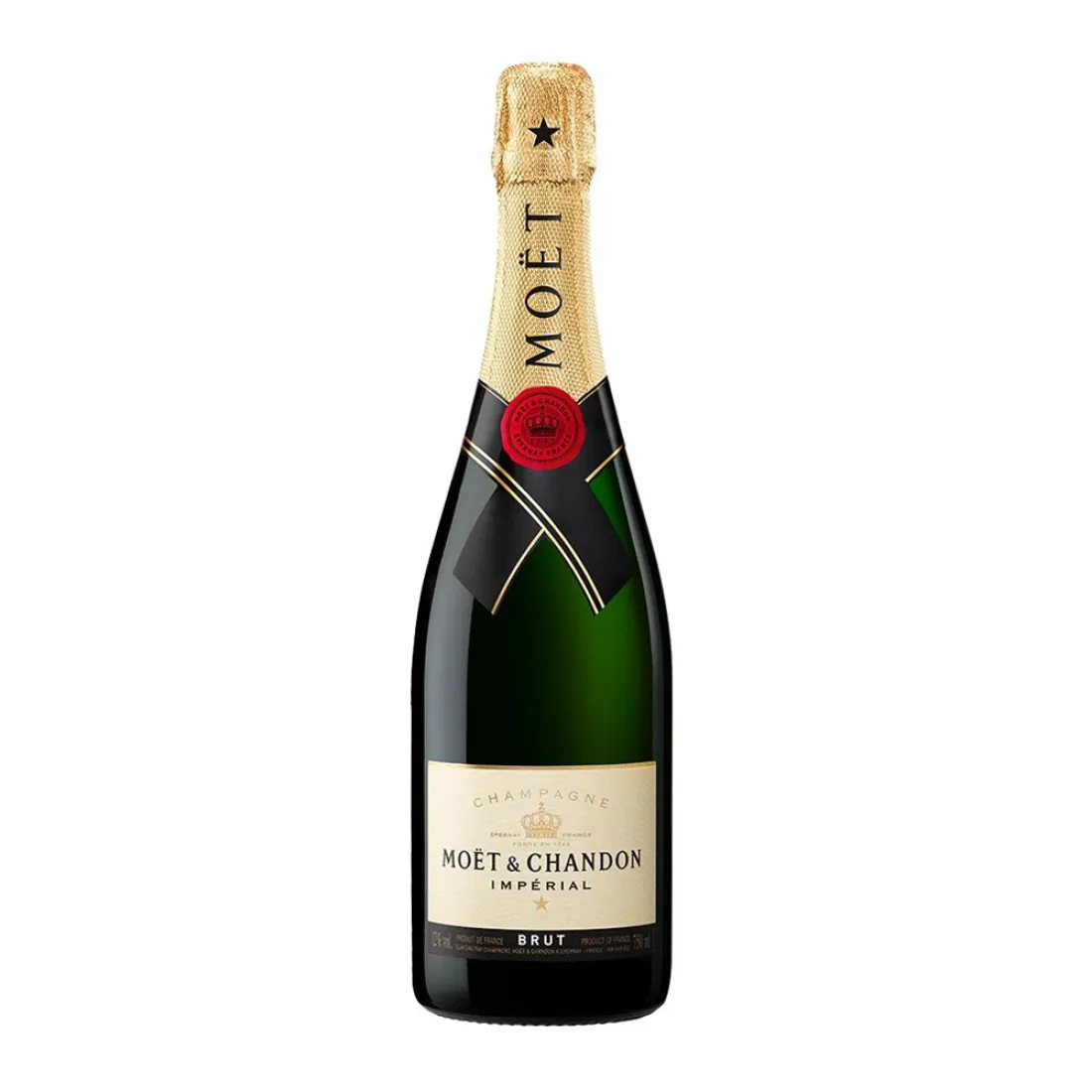
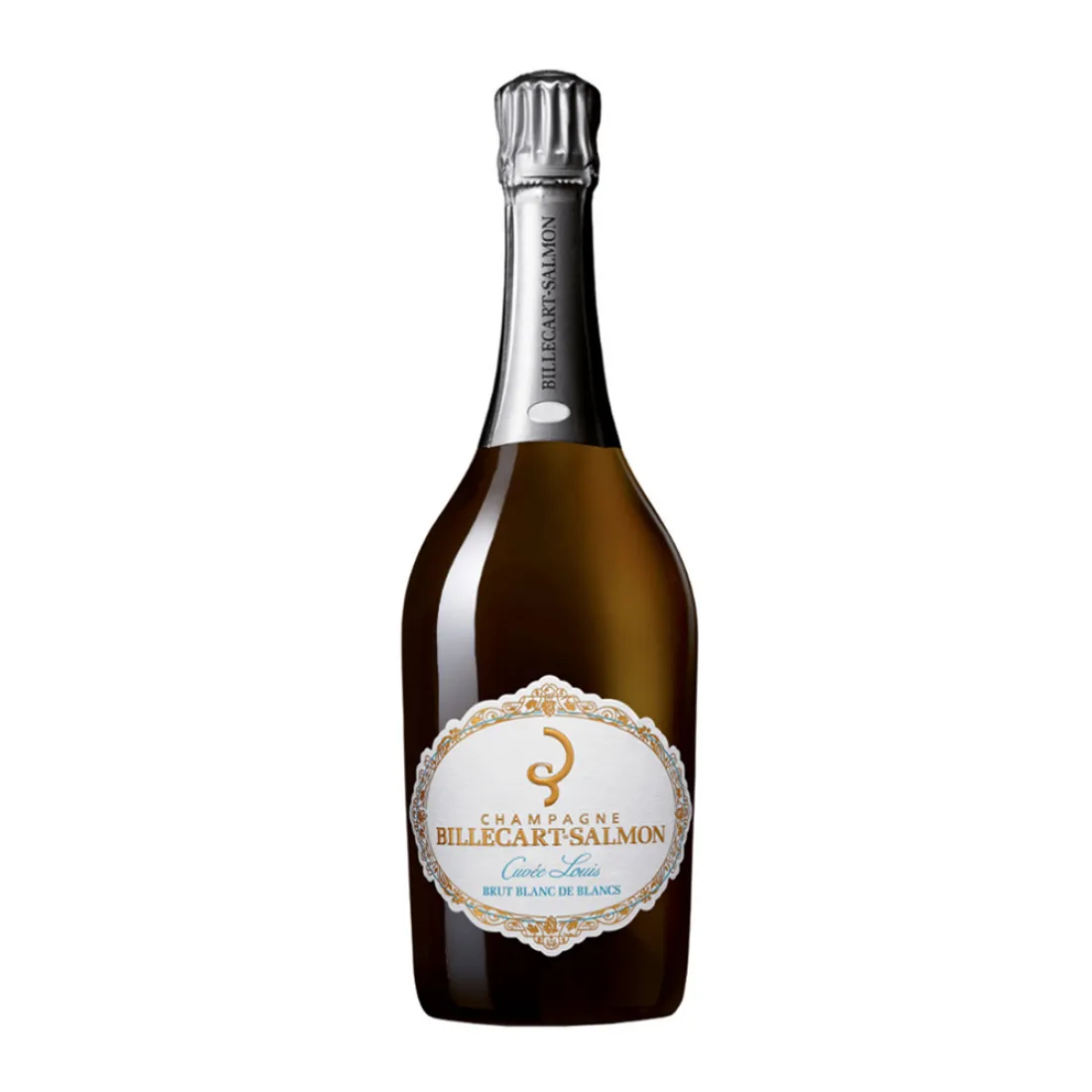
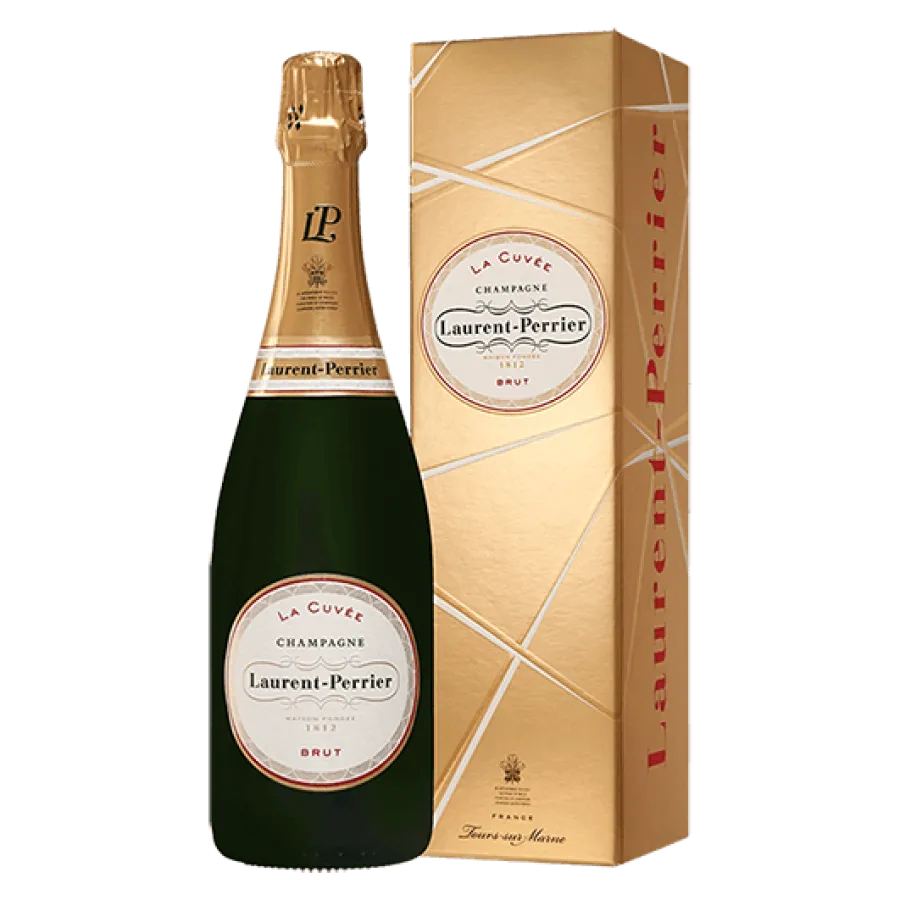
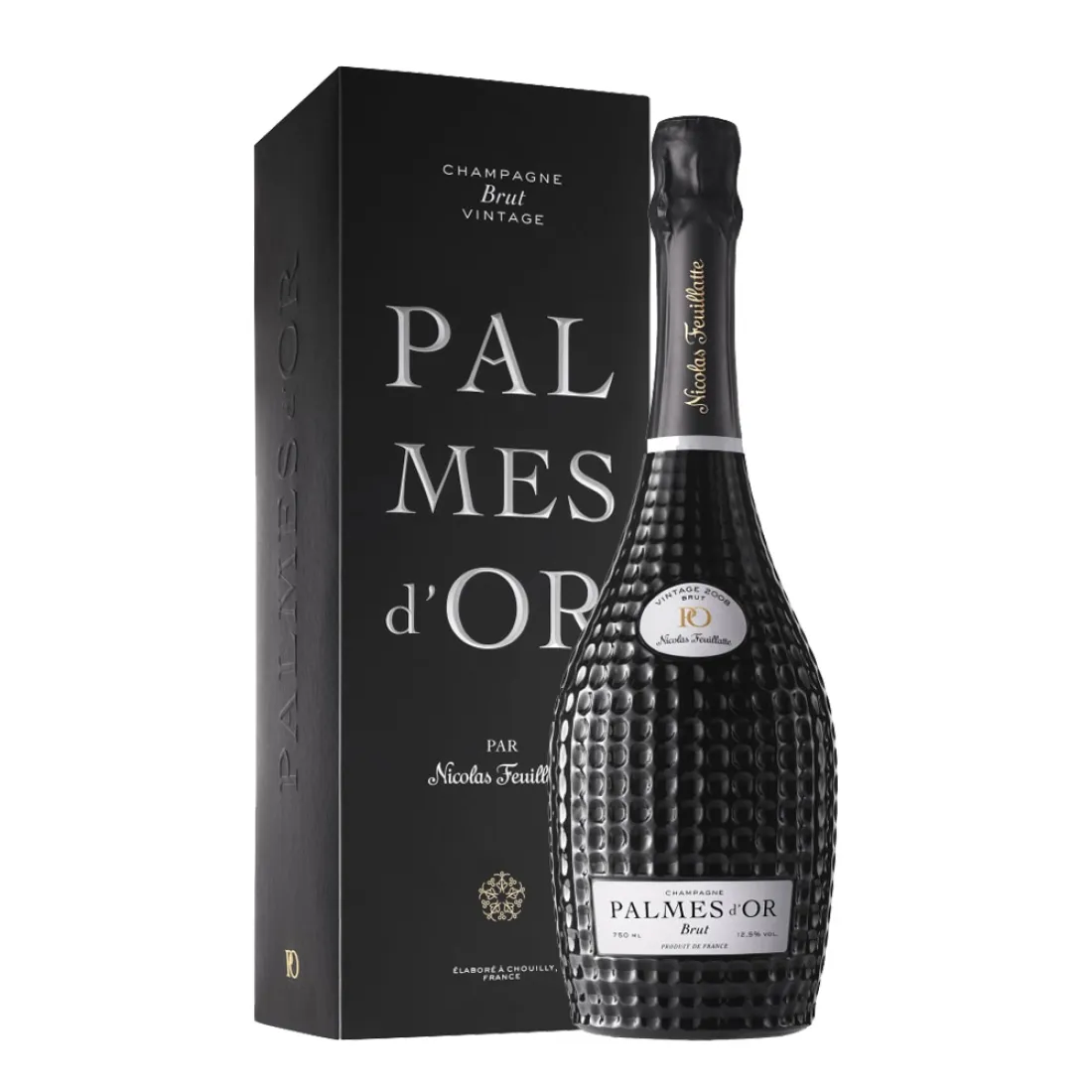
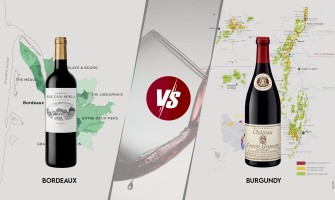
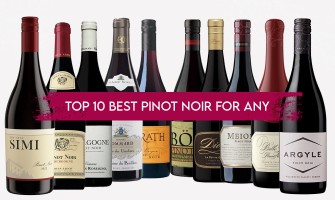
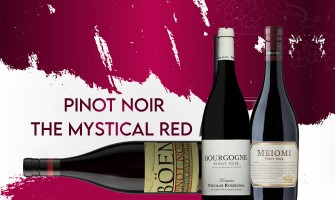
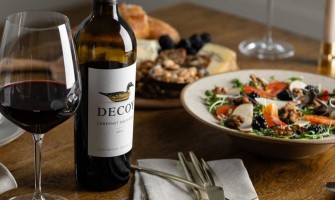
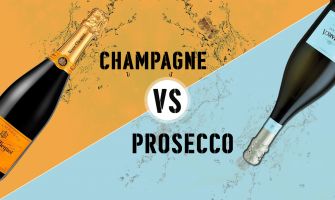







Leave a Comment